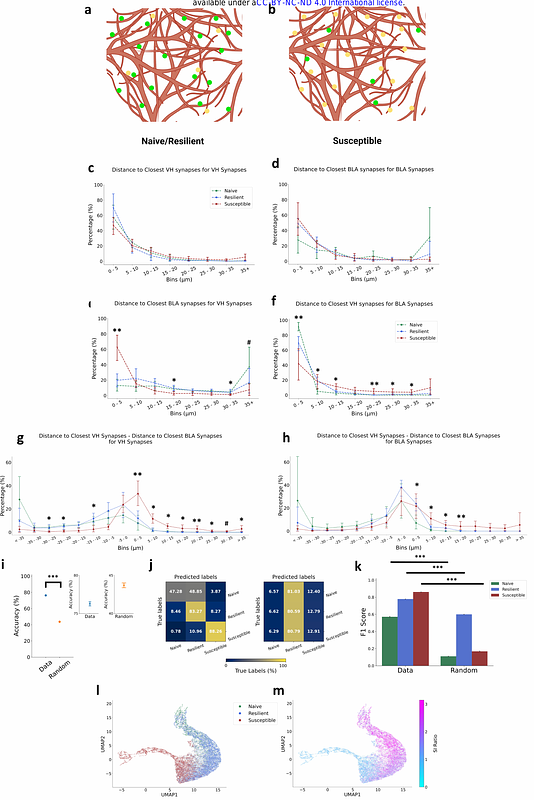VENTRAL HIPPOCAMPAL AND BASOLATERAL AMYGDALAR INPUTS TO DEEP, BUT NOT SUPERFICIAL LAYERS OF MEDIAL PREFRONTAL CORTEX UNDERLIE STRESS SUSCEPTIBILITY

VENTRAL HIPPOCAMPAL AND BASOLATERAL AMYGDALAR INPUTS TO DEEP, BUT NOT SUPERFICIAL LAYERS OF MEDIAL PREFRONTAL CORTEX UNDERLIE STRESS SUSCEPTIBILITY
Solakoglu, S. T.; Erdener, S. E.; Gliko, O.; Can, A.; Sumbul, U.; Eren-Kocak, E.
AbstractStress response is essential for adapting to an ever-changing environment. However, the mechanisms that render some individuals susceptible to stress are poorly understood. While chronic stress is known to induce dendritic atrophy and spine loss in medial prefrontal cortex (mPFC), its impact on synapses made by long-range projections terminating on the mPFC remains unknown. Here, we labeled synapses on mouse mPFC dendrites formed by ventral hippocampus (VH), basolateral amygdala (BLA) and ventral tegmental area (VTA) long-range afferents using different-colored eGRASP constructs. We obtained multispectral 3D images of the mPFC covering all cortical laminae, and automatically segmented the dendrites and synapses. We investigated the relative abundances and spatial organizations of VH-mPFC, BLA-mPFC and VTA-mPFC synapses on a laminar basis in stress naive, stress resilient and stress susceptible mice. Our findings demonstrate afferent- and lamina-specific differential reorganization of synapses between different stress phenotypes, suggesting specific roles for different long-range projections in mediating the stress response.